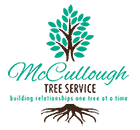By: Shelby McCullough| Published: March 7, 2018
What is Sunscald, and How to Protect Your Trees
Did you know trees can get a sunburn, too? Sunscald is a real danger for trees exposed to direct sun day after day. Once damage happens, there is no way to reverse it, so it is important to protect your trees before it is too late. Here’s what to look for to diagnose your trees with sunscald, tips for prevention, and how to keep your trees healthy.
Causes of Sunscald in Trees
Sunscald happens when cold winter conditions cause abrupt temperature changes in bark. When the temperatures are cold, but the sun is still shining, the southwest side of a tree’s trunk becomes especially vulnerable to sunlight and begins to get warmer. As a result, the bark deteriorates and loses its capacity to endure the harsh winter temperatures. When the sun sets at the end of the day, the temperature of a tree’s bark rapidly declines, which causes the bark tissues to freeze. Eventually, this impact erodes the bark and compels the emergence of sunscald symptoms.
Symptoms of Sunscald on Trees
Sunscald occurs when an extensive area of burned bark on a tree is identified on the trunk or branches. The area impacted by sunscald is typically sunken and contains cracked wood that peels off to display diseased wood. Sunscald is also known as southwest injury because it tends to occur on a tree’s south or southwest side. Young trees, recently planted trees, and trees with feeble bark are more prone to experiencing sunscald when compared with evergreen trees, which have lower branches that can act as shields to protect the trunk from the sun.
Some of the most at-risk types of trees include:
- Maple
- Walnut
- Birch
- Honey locust
- Linden
- Mountain ash
- Fruit trees
- Willow
- Tulip trees
- Aspen
- Crabapple
Preventing Sunscald
Since sunscald is a result of sunlight warming a tree’s bark, the best means of preventing it is to shield the bark from the sun. Some of the most effective bark-shading methods include:
- Leaving lower branches on a young tree trunk for a few years to shade the bark as it grows.
- If feasible, plant your trees in areas that can provide shade from landscape structures, fences, buildings, or evergreen trees.
- Place a light-colored board nearby so it faces the tree’s trunk to keep it shaded throughout the colder periods of the year.
Now Serving Casselberry, FL
We’re thrilled to announce that McCullough Tree Service is now offering its expert tree care and maintenance services in the Casselberry, area. Casselberry, residents can benefit from our wide range of services, including professional tree trimming, tree removal, stump grinding, and comprehensive storm cleanup. Our team of certified arborists is dedicated to maintaining the health and beauty of your trees, ensuring your landscape remains safe and attractive. Trust us to bring top-notch tree care solutions to your doorstep. For more information or to schedule a consultation, call us today at (407) 734-5854.
Sources:
https://www.gardeningknowhow.com/plant-problems/environmental/sunscald-on-plants.htm
https://www.groworganic.com/organic-gardening/articles/sunscald-and-sunburn-in-plants

